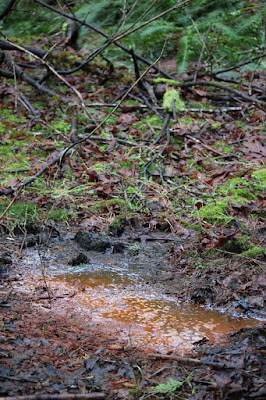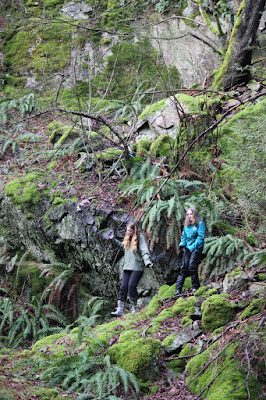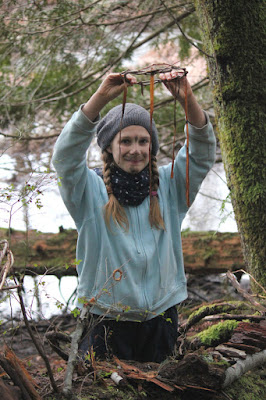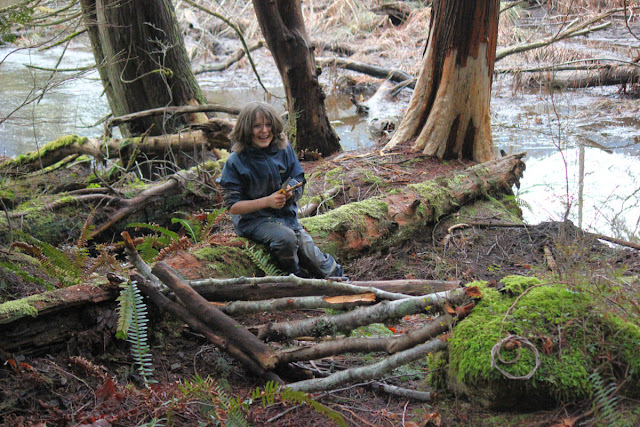 |
| These beautiful bulbs from my friend gave us weeks of joy. |
I come from a family where Valentines day was all about the family. Some of my earliest treasured memories were a heart-shaped box full of chocolate almond bark and a white rose from my Pappa (and a red one for my Mum), beautiful Valentines dinners and loving messages in cards from my Mum, the funniest valentine ever from my brother, the comedy of which has lasted into our adulthood, and special heart-shaped cards from my Dad, who saved them for as long as it took for me to visit him again after Valentines. Except when he mailed them.
Due to some losses in our family, as well as big life-changes and living in a construction site, my household has lost its romance in the last few years, and it's been easy to slip out of the habits that once kept us tight and together. I woke up a couple of weeks ago and realized the only music we'd been hearing for a year or so was our daughter's pop music. The only candles we lit were during power outages, and the only time we celebrated each other was in the presence of others. A special evening with just the four of us was often more riddled with frustration and bickering than with joy. Is it because my kids are teens now? Is it because I've lost the ability to hold the family in love? Have we all just lost our joie de vivre?
So we began reading to each other again. My pair of teens loved the idea of sharing their favourite books with us, and it's been pleasant. We all climb in the big bed and take turns reading (except when tired parents fall asleep... apparently this doesn't change as the kids get older). But the beauty of that evening commune hasn't spread into the rest of our days. So one day I asked my husband to put on some nice music. His music. He put on the soundtrack to the Mission. The kids were perplexed, but they did seem happier. I put a candle on the table and my son lit it joyfully. It took so little to bring our dinnertime back to a loving place. But there it was. Four of us sitting in a shared romantic moment again. Bickering begone!
Sometimes the romance comes in a shared cup of tea; a little outing in the wind or rain or snow or sunshine, or some roasted campfire potatoes and simply laughing at the silliness of life.
It's not a permanent solution. The emotional lives of teens are turbulent, regardless, and we're still living in a constant state of upheaval. But the injection of a little romance into our daily lives does seem to be helping. Even just lighting a candle and having a bath by myself has helped. It allows me to emerge from the tub feeling much more pleasant than when I entered it, and most importantly, that pleasantness is reflected back from my children.
I used to be happier, and my children remember that time. They nostalgically remind me of the times I used to wear skirts and dance and sing in the house. They long for candlelit dinners and beach fires. Despite being teens now, with their own agendas and busy lives, they are longing for the romance we have lost.
Romance is part of what keeps us engaged in our relationships. And it's like a water wheel. The water falls in from the top, pushing the thing to keep going and to power everything else. But you have to keep dropping a little in from the top, or it will slow to a stop, and everything that's powered by that wheel will stop too.
Here are some of the little things that used to keep the romance going for our family, and which we'll try to get back into again:
Walks in the wilderness: Obviously this is the most life-giving treat you can give to yourself and your loved-ones. Even if you can't find time to do it as a family, just going with a friend or alone is so nourishing. I have been joining my Mum on her dog-walks sometimes recently, and no matter what I have given up to spend that time with her, I have always returned feeling the shared walk was worth it.
Flowers in the house: For the inevitable times when you can't be in the wilderness, bring some inside! Whether beautiful bulbs like those my friend gave me (photo above), some fresh-cut budding branches from outside, or a fortuitously-blossoming houseplant, flowers bring both colour and a feeling of life into our living space.
Music: Play it, sing it, listen to it, or go out and experience it in a group. Just let it feed your family's soul. Music allows us to open our hearts even when they have been closed for years.
Fire: Candles on the table, a lantern in the bathroom, a bonfire in the back yard or a late night beach fire with friends; in the middle of winter roast treats on skewers in front of an open wood stove or over a candle! Fire has a way of warming our hearts and making it easier to give and accept love.
Decorate! Similar to bringing flowers inside, having small visual treats in the house (or car or yard or even your child's lunch) infuses joy into our minds' wandering as we notice them. And, like the water wheel, it's important to keep feeding it. Some people have a seasonal table or a shelf or wall whose decorations get refreshed. All romance needs refreshing once in a while!
Food: I'm not always up for making a fancy meal, but I try to make our meal beautiful at least once a week. I figure if we're happy just looking at the food, we'll be more open to its nourishment, and to enjoy the time we spend eating it together.
Happy Valentines Day! May every day of the year be infused with some romance, may your waterwheel keep spinning and the love you give keep coming back to you.
 Nobody telling you your beard is too long. OK, so sometimes people you love tell you your beard is too long, but you love them and you love yourself anyway - and your beard. Because it's just the way it is. And you quietly tell your wife you might always have had a beard except in the beginning you just felt you *had* to cut it. Then you grew up and discovered such rules were not for you.
Nobody telling you your beard is too long. OK, so sometimes people you love tell you your beard is too long, but you love them and you love yourself anyway - and your beard. Because it's just the way it is. And you quietly tell your wife you might always have had a beard except in the beginning you just felt you *had* to cut it. Then you grew up and discovered such rules were not for you. No limits is nobody saying you can't take your kids out of school to help you at work. Or your kids never had the obligation to go to school in the first place. In fact you've become increasingly uncertain where the line is between work and play and school and projects and love and rest. And that's OK because you've also become increasingly likely to find similar-minded people whose boundaries have gotten so fuzzy there may be no boundaries at all.
No limits is nobody saying you can't take your kids out of school to help you at work. Or your kids never had the obligation to go to school in the first place. In fact you've become increasingly uncertain where the line is between work and play and school and projects and love and rest. And that's OK because you've also become increasingly likely to find similar-minded people whose boundaries have gotten so fuzzy there may be no boundaries at all. No limits on life and love. Like when you think you might play accordion out on the boardwalk and earn a few dollars, and you just play whatever the hell comes out of your growing fingertips (yes seriously - at 15 his fingertips are growing!) and behold there's nobody stopping to suggest you stop making stuff up and play a song everybody knows. Anyway even though you're improvising, some people seem to sing along... with no hesitation. More people with no boundaries. They're everywhere!
No limits on life and love. Like when you think you might play accordion out on the boardwalk and earn a few dollars, and you just play whatever the hell comes out of your growing fingertips (yes seriously - at 15 his fingertips are growing!) and behold there's nobody stopping to suggest you stop making stuff up and play a song everybody knows. Anyway even though you're improvising, some people seem to sing along... with no hesitation. More people with no boundaries. They're everywhere!

























































